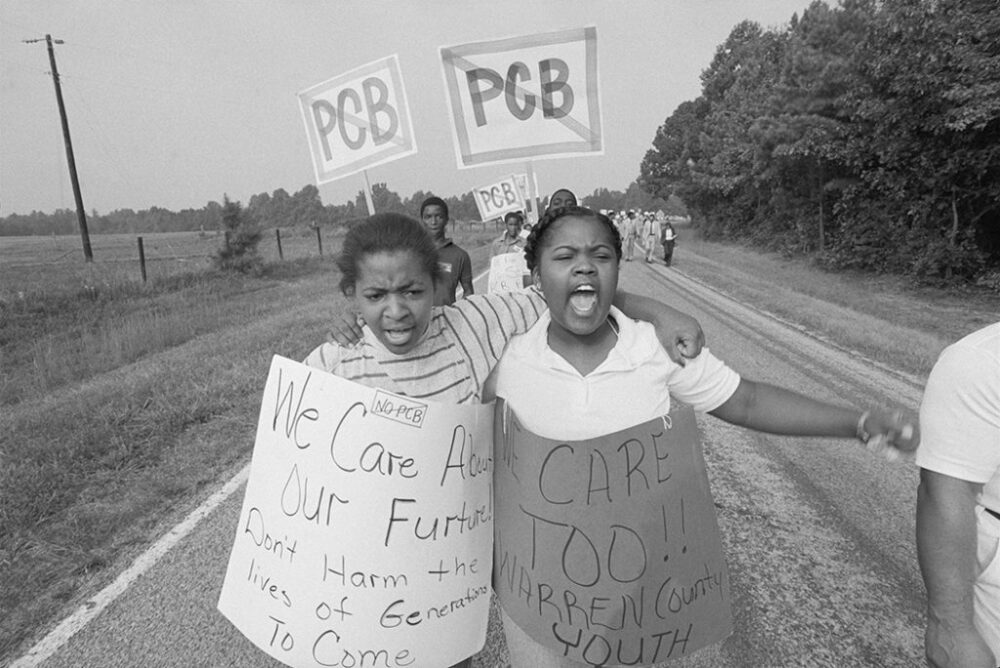We have much more to do and your continued support is needed now more than ever.
Ramifications of EPA’s Proposed New Carbon Pollution Standards for Minority Communities

EPA released its proposed new carbon pollution standards for fossil fuel-fired power plants on May 11, 2023. It is a cause for celebration not only for minority communities all over the country, but I consider it a personal cause for celebration. I grew up in Mobile, Alabama – where my family still resides – in the shadow of paper product companies, which are known to have produced the most air pollutants in Alabama. As with most communities in the South, respiratory and cardiovascular disease is prevalent and linked to increased air pollutants from facilities. So, why are the proposed carbon standards so very important?
My mother is a 3-time lung cancer survivor and a 6-time cancer survivor, and she also suffers from chronic obstructive pulmonary disease (COPD). This is not too surprising, as minority populations are exposed to more air pollution (actually pollution generally) than their White counterparts and race is the most important predictor of exposure to environmental contamination. People who live in predominately Black communities have a greater risk of premature death from air pollution than White communities, and tend to live in areas where there are greater exposures to air pollutants, including near highways, bus terminals and other sources.
An important study, conducted by the Harvard T.H. Chan School of Public Health (where I conducted my postdoctoral studies) and published in Nature in 2022, found that racial and ethnic minorities and lower-income groups in the U.S. are at a higher risk of premature death from exposure to fine particulate matter (PM2.5) than other population and income groups.
The proposed standards are impactful for many who suffer from the detrimental effects of air pollution, like asthma. According to the Asthma and Allergy Foundation of America, Black, Hispanic and American Indian/Alaska Native people have the highest asthma rates, asthma deaths and asthma hospitalizations. These groups – and minority groups generally – are disproportionately affected by asthma and have the least success in asthma management. Issues stemming from systemic racism, segregation and discriminatory practices like racism play an enormous role in this observed disparity. I often tell of how my Mom and countless other poor families who could not always afford asthma medication or medical care would hold their child over a bathtub with running hot water, so that the steam from the hot water would hopefully reduce the effects of asthma attacks, thus allowing that the child to breathe easier. My Mom regularly did that very action with my younger brother.
According to the World Health Organization, more than 25 million people in the United States suffer from asthma and it is a common disease among children. Worldwide, more than 260 million people suffer from it. Black Americans are three times more likely to die from asthma than White Americans, and that increases to 10 times for Black children. In a 2020 landmark case, air pollution was listed as a cause of death by the coroner in a 9-year old Black girl’s death in the United Kingdom. The coroner said the “failure to reduce pollution levels to legal limits possibly contributed to her death, as did the failure to provide her mother with information about the potential for air pollution to exacerbate asthma.” I had an opportunity to speak with the young girl’s mother before the ruling was handed down, and I know how important it was to her to have air pollution listed as a cause of death – so that it would help prevent other air pollutant deaths. In her daughter’s case, the coroner found that air pollution induced and exacerbated her severe form of asthma.
Other issues that impact a community’s health related to air pollution include socioeconomic status, education, neighborhood and physical environment (which link directly back to systemic racism and discriminatory practices) and access to health care have a definite impact on the disparities in health and exposure.
The ramifications of these standards are important on a public health level AND a personal level for many, including people living in Cancer Alley, Africa Town, Coal Country, and so many other places where air pollution from coal-fired power plants and fossil fuel-fired plants is linked to asthma, cancer, heart and lung problems, and other illnesses.
EPA’s proposed standards are poised to save a multitude of lives, particularly those of minority communities, but also to populations generally – including in states downwind from these facilities. As a scientist and a public health professional, I am awed by the potential impact on lives this proposal by EPA will have. As an attorney, I am focused on the need to ensure that once adopted, there is strict enforcement of the standards. As a Black person and a human, I recognize that we are one step closer to decreasing the sheer number of people who suffer needlessly at the hands of those who continually place profit over people.





















